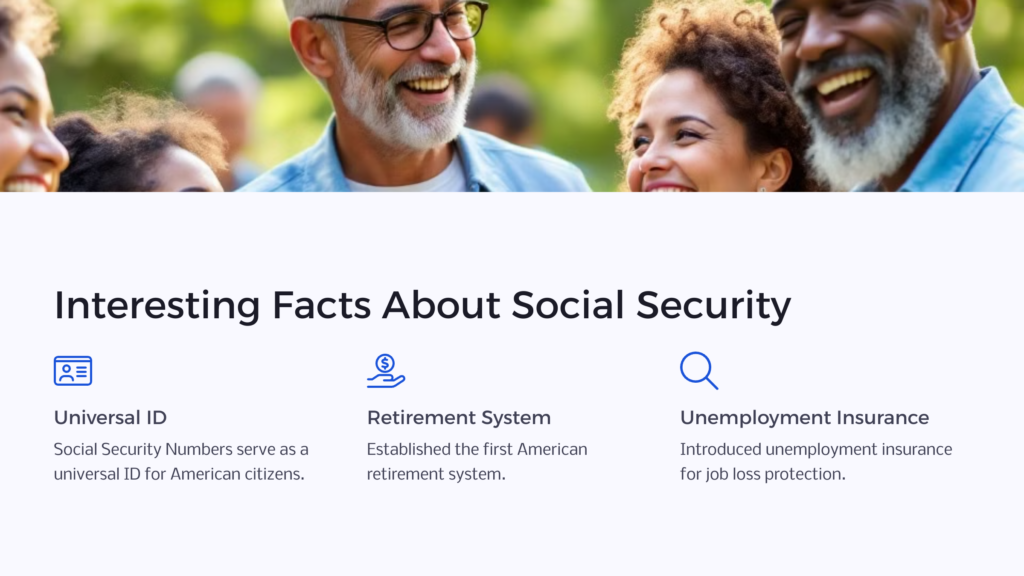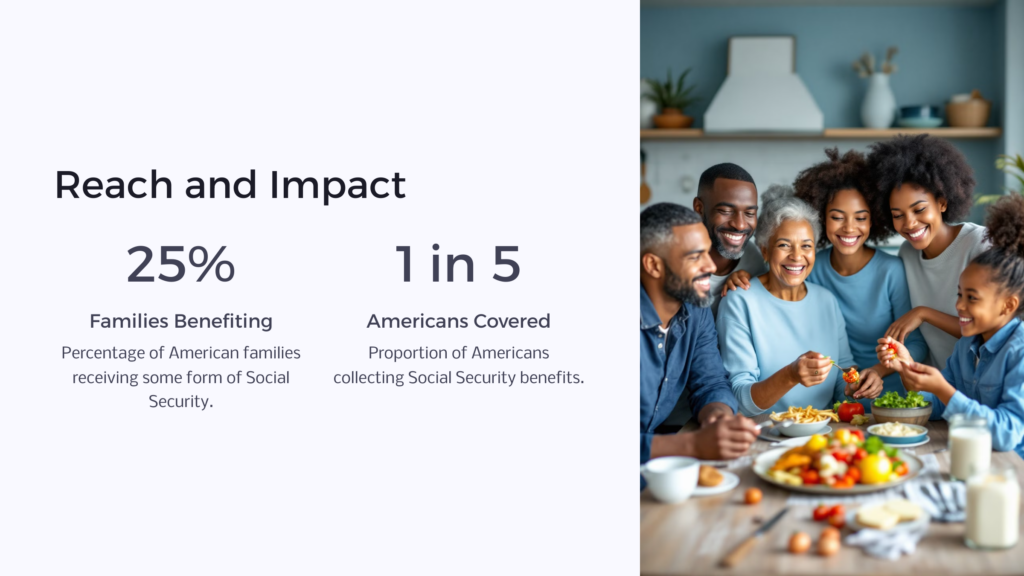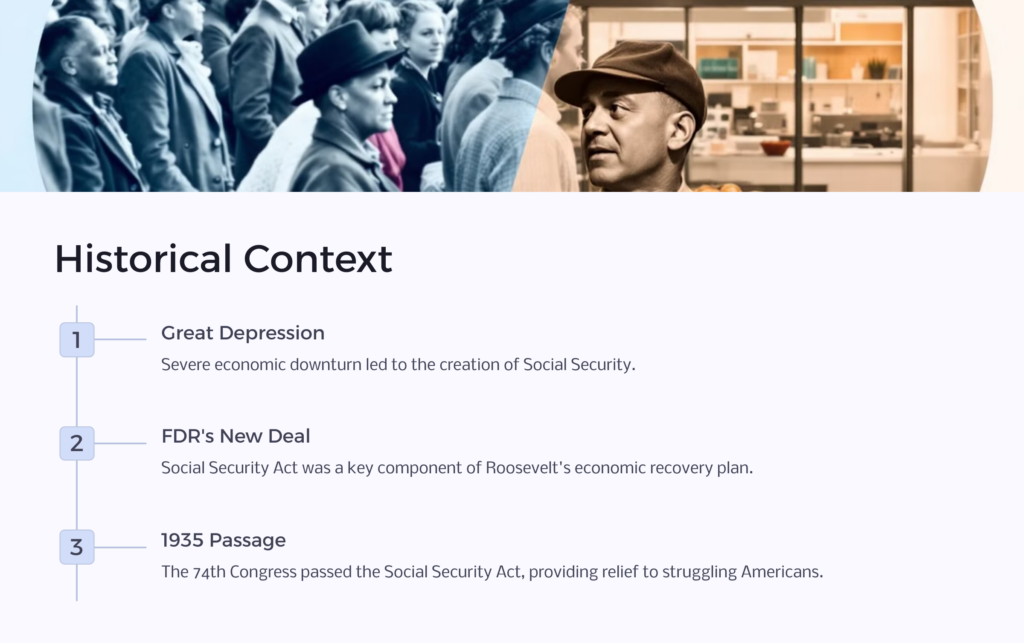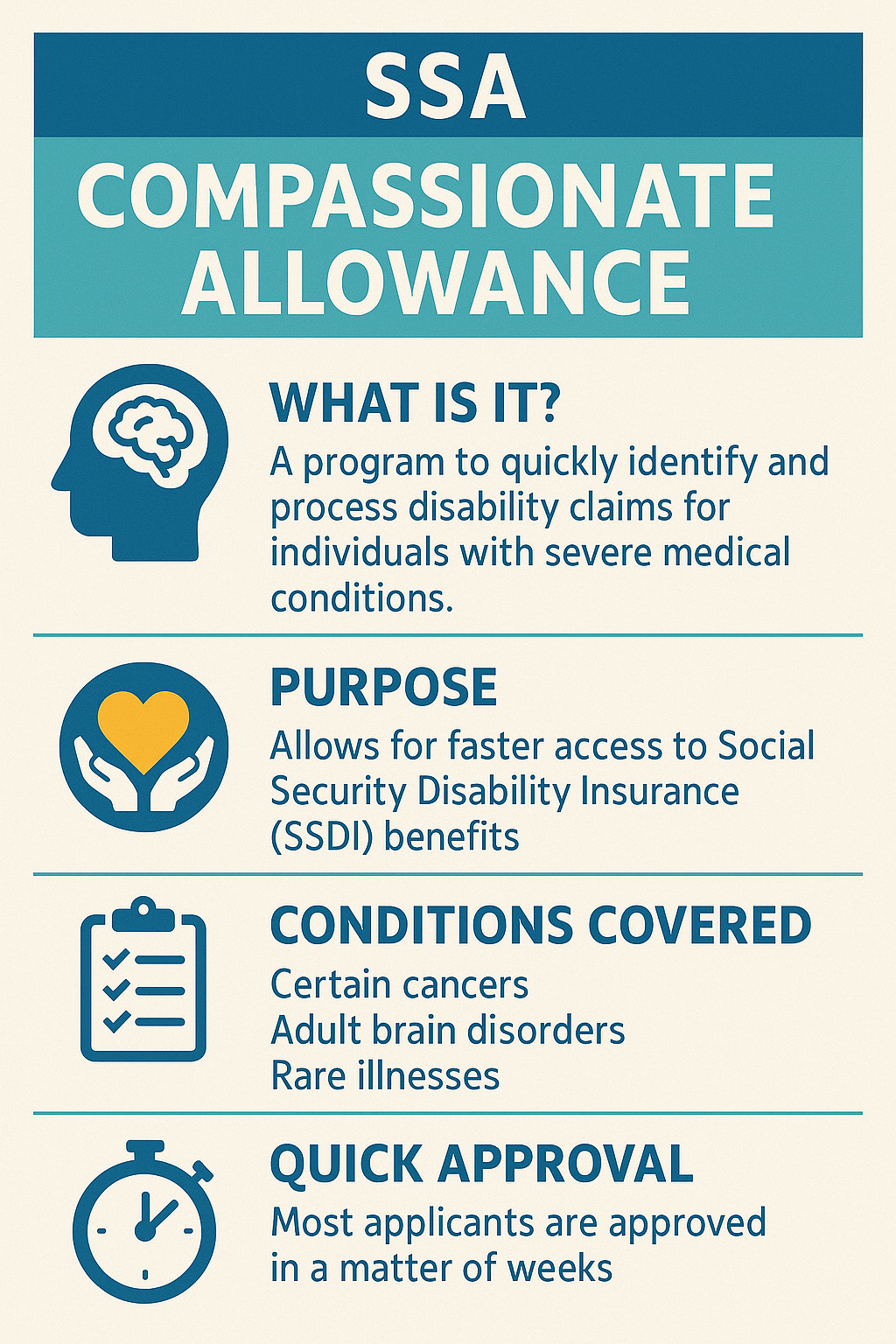We may tend to take Social Security for granted in 2020, but its passage in 1935 was an enormous benefit for American society. Social Security has vastly improved the lives of the elderly and allowed disabled people financial security for 85 years. It was a key component of President Franklin Delano Roosevelt’s famous “New Deal” (and World War II) that helped lift the country out of the Great Depression.

The Social Security Act provides cash benefits for disabled workers who have lost their jobs, disabled individuals who cannot work, and retirees. The benefits include a monthly check, medical care, and benefits to surviving spouses and surviving children—known as the “survivor benefit.”
We’ve put together the 10 most interesting facts about the Social Security Act.
- The SSA is the reason we all have a Social Security Number—and a universal ID as an American citizen.
- Before the Social Security Act, there was no American retirement system.
- Before the Social Security Act, there was no such thing as “unemployment insurance” if you were fired or laid off from a job.
- SSA created the social welfare system in the US—without it, there might not be any other government benefits such as food stamps, housing assistance, or temporary assistance to needy families (TANF).
- Before the Social Security Act, if you became disabled due to an on-the-job injury, you had to hope your state had Worker’s Compensation and, if they did, hope your claim was approved. If your injury happened outside the workplace, you were likely to become impoverished quickly, unless you could find a family or a charity agency to help you.
- Social Security benefits are paid for using the “payroll tax” – also known as FICA. The Trump Administration is the first administration to ever pass a law to delay collecting the payroll tax. Before the current administration, lawmakers were hesitant to interfere with the payroll tax because funding Social Security is so important to so many Americans.
- The Social Security tax is something every American worker contributes to, which is why Disability Insurance (SSDI) and retirement benefits are both “entitlement” programs. As an American worker, you have already paid for your own disability and retirement benefits.
- If you’ve worked and earned an income you’ve paid for most of your Social Security retirement benefits but technically, you paid for another worker’s retirement (as someone still in the workforce is paying for you now, if you are retired) through FICA taxes.
- 25% of American families receive some form of Social Security, and most of those get health care provided for at least one family member through SSA (through Medicare or Medicaid)
- SSA is designed to provide stability to families, which is why dependent parents and dependent mothers get benefits when a worker dies. The whole idea behind SSA is to provide societal stability—which is why dismantling Social Security would create shock waves of poverty and instability throughout the US.
What Is the Social Security Act?

Some believe SSA just provides an “old age pension” but in fact, it does much more. Of course, retirement benefits are a huge part of the SSA budget, but Social Security disability benefits serve millions of younger people (under 65) who need help due to a disabling impairment that keeps them from working. The SSA was passed to create a “safety net” for vulnerable people in society: the elderly, the poor, the disabled worker, and family members of retirees and disabled people.
Who Created the Social Security Act?
SSA was passed by the 74th Congress of the United States during a time of severe economic downturn called The Great Depression. In 1935, the economy was almost at its lowest point in American history due to the stock market crash of 1929. Americans were living in makeshift shacks in Central Park, and suicide rates were high. Bread and soup lines stretched for blocks in major cities. In 1935 Unemployment topped 20% (and was close to 25% two years prior).
It is worth noting that during today’s COVID-19 pandemic, unemployment was only 15% at its worst.
When FDR passed the SSA it provided tremendous relief for a nation struggling. Although what were called “mother’s pensions” had begun in 1920 (which provided help to dependent women and children) there was no cohesive program for older Americans, and no way for disabled adults to earn money. Elderly Americans, particularly, faced poverty in old age and—as a result of poverty–shorter lifespans. Most people worked until the day they died.
What Did the Social Security Act Do?
The generosity of Social Security allows families to survive who, in times past, would have no income due to the breadwinner (usually the husband or father) becoming disabled. It also gave older workers a chance at real retirement.
Americans had the projection of Worker’s Compensation (passed, with the help of Unions, in 1916) but Workers Comp did not help with illness or injury unrelated to a job. That left a lot of Americans out in the cold and struggling to survive if they had back luck.
 SSA radically changed American life, allowing families to maintain their dignity if the breadwinner was injured or became ill. It also allowed families to collect an old age pension check for grandma or grandpa, strengthening family earnings. The modest monthly checks allowed families to get basic resources, helping to reduce the very real problem of childhood hunger (especially in rural areas) across the nation.
SSA radically changed American life, allowing families to maintain their dignity if the breadwinner was injured or became ill. It also allowed families to collect an old age pension check for grandma or grandpa, strengthening family earnings. The modest monthly checks allowed families to get basic resources, helping to reduce the very real problem of childhood hunger (especially in rural areas) across the nation.
It is hard for modern Americans to fully grasp how difficult life was for poorer Americans (in other words, most Americans) prior to the Social Security Act. Today, we have a range of government benefits such as food stamps and low-income housing vouchers to help. In the 1920s and before, people had to rely on family members or charity for help.
A Closer Look at SSA Facts

- We all have Social Security numbers today, and we are taught to keep them private and not hand them out to just anyone. Before SSA passed, there was no “national ID” system. The SS number was created only to track earnings in order to calculate SS payments to workers.
- The number itself is divided into three parts:
- The first three digits are the area number or geographic region of birth (except 666)
- The next two digits are the group number, always between 01 and 99
- The final four digits are the serial number, between 0001 and 9999, (excluding 0666), assigned randomly
- The retirement system as we know it did not exist before August 1935, when SSA passed. Most Americans did not retire, except for those wealthy enough to have amassed savings. SSA ensured that any American over 65 years (at that time, the life expectancy of most American men) would be entitled to a monthly check based on lifetime earnings, or the earnings of a deceased spouse or parent. Reaching retirement age meant having the ability to quit working while still bringing in a paycheck.
- Prior to SSA, the concept of unemployment insurance did not exist. Today, workers are guaranteed 26 weeks of wages (a percentage of their usual wage) through a program run by the Department of Labor and administered through the states. It was SSA that provided a tax incentive for states to provide unemployment benefits.
- In 1930, when 1 out of 4 eligible workers had no job, the total public expenditures for what we would call “social welfare” programs, (not including veteran’s programs and public education), were under 1% of the US gross national product (GDP). Today, the US Federal, State, and local governments spent about 12% of the GDP on social welfare. This includes public education, which distributes many social services.
- Although veteran’s benefits and Workers’ Comp came along before SSA, they did not provide benefits for most workers. Women, especially, did not usually benefit. Men who did not serve in WWI or who did work uncovered by Worker’s Comp could be injured on the job and be unable to collect compensation. It wasn’t until 1949 that all US states had Worker’s Comp laws in place.
- The economy in 2020 is limping along, and President Trump has attempted to unilaterally (invoking executive privilege) cut the payroll taxes that fund Social Security. The idea behind such a move is to put more money in worker’s pockets since FICA would not be taken out of worker’s checks. This hasn’t gone well; however. Employers are worried they would face large, unexpected tax bills and so are workers. Federal employees have already gotten the payroll tax cut and most are angry about it.
- Social Security benefits, including SSDI, are never a “hand out.” Workers earn their benefits by paying into the system. SSI (Supplemental Security Income) is funded through income and corporate taxes and is genuinely a welfare program to help individuals who are both disabled and impoverished. Individuals earn up to four work credits per year that count toward their eventual cash benefit for disability or retirement. The benefit can vary, however, depending on where the worker was employed. For example, in the Windfall Elimination Program, workers may earn less in disability or retirement if their employer didn’t withhold enough in Social Security Taxes.
- Workers pay 85 cents out of every dollar they pay in FICA taxes to help fund another worker’s retirement benefit. The rest goes to pay for disability benefits. This means when you reach retirement age, a younger worker will be contributing to your monthly check. This money goes to two Social Security trust funds: one for old age and survivor’s insurance (OASI) and the other for disability insurance (DI). The trust fund money is invested in government-secured treasury bonds.
- One in five Americans collects Social Security benefits of some kind. This means 20% of people in the US, approximately, are getting their health insurance supplemented by SSA. Two thirds of Americans get private health insurance (usually through their employer) including those who are self-employed or unemployed and receive health insurance through the Marketplace (Obamacare).
Ultimately, SSA is not a program for individuals. It was designed to provide security to families, especially since it was created during one of the darkest periods in American history—the Great Depression. If a husband dies at the age of 67, for example, his widow is guaranteed by federal law to receive a significant portion of his SS benefit, which in turn was a portion of his lifetime income.

SSA came along just in time for Americans, modeled on European social security safety nets. Before 1935, there was no social or public pension fund, and most Americans couldn’t stop working. Disability insurance didn’t exist. It took sweeping legislation – and a few amendments – for FDR and the 74th Congress to change all that. The vision of that Congress and that president stands in stark contrast to today’s federal government, who cannot come to agreement about how to provide relief to workers due to the COVID-19 pandemic and the massive unemployment afflicting the US today.
 Benefits.com Advisors
Benefits.com Advisors
With expertise spanning local, state, and federal benefit programs, our team is dedicated to guiding individuals towards the perfect program tailored to their unique circumstances.
Rise to the top with Peak Benefits!
Join our Peak Benefits Newsletter for the latest news, resources, and offers on all things government benefits.




















